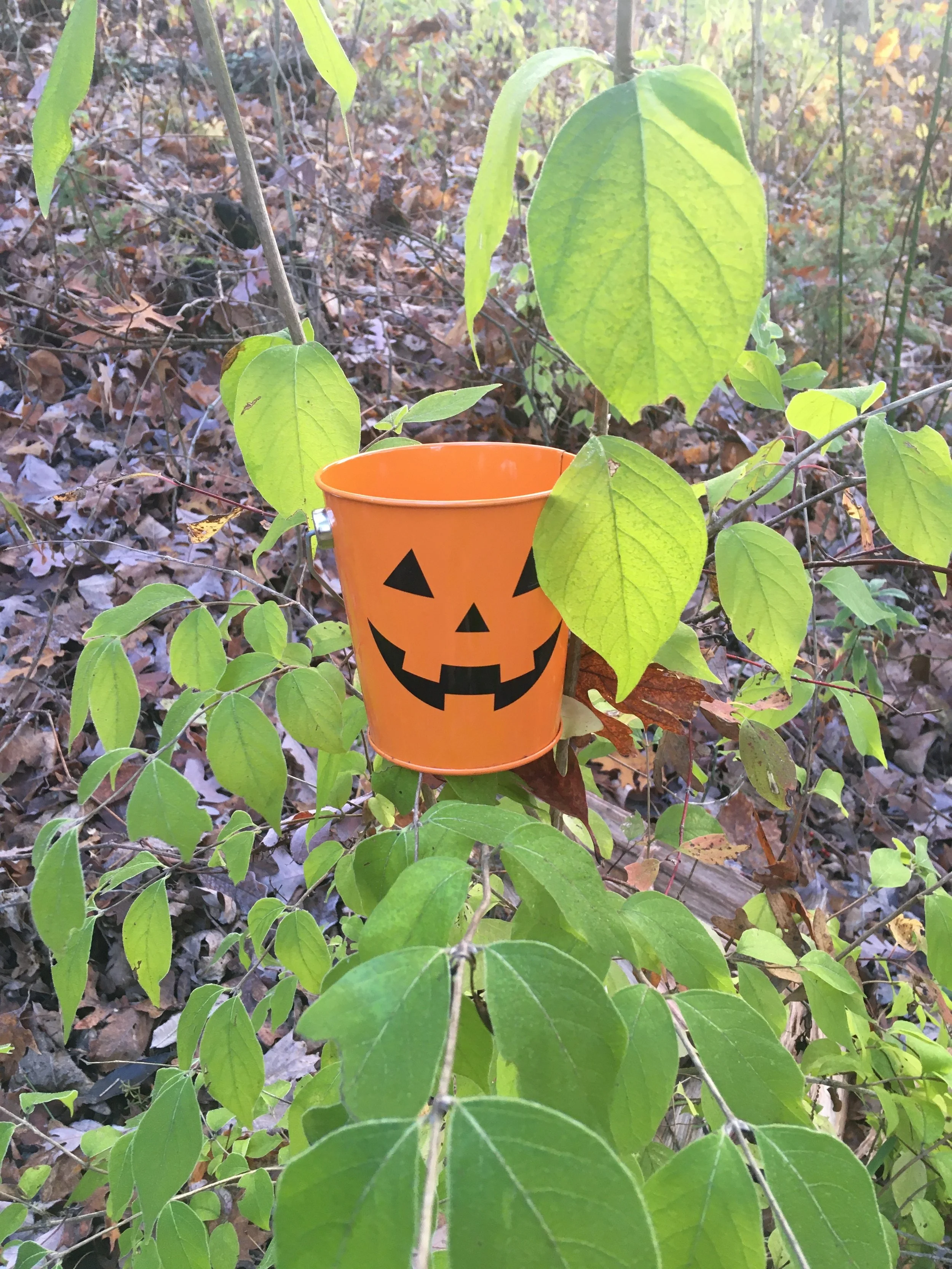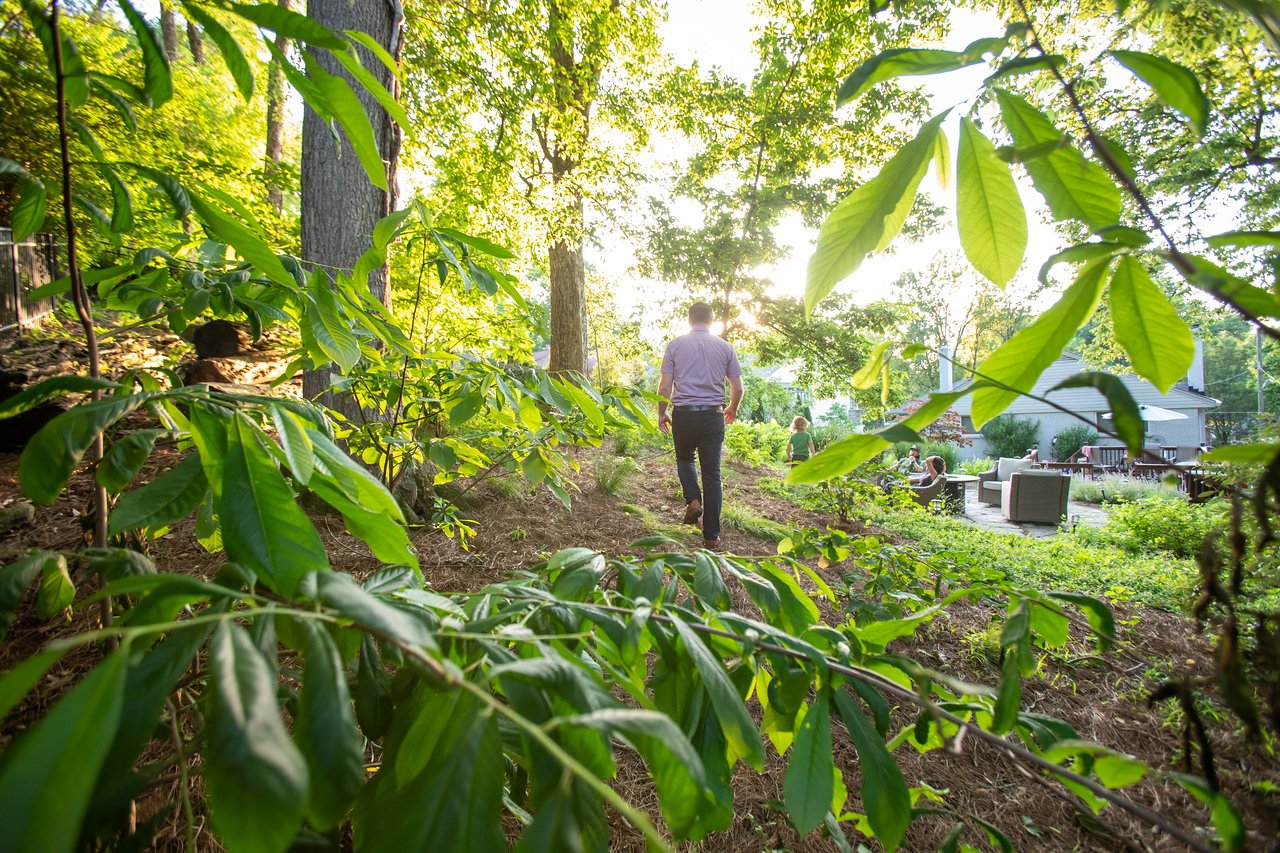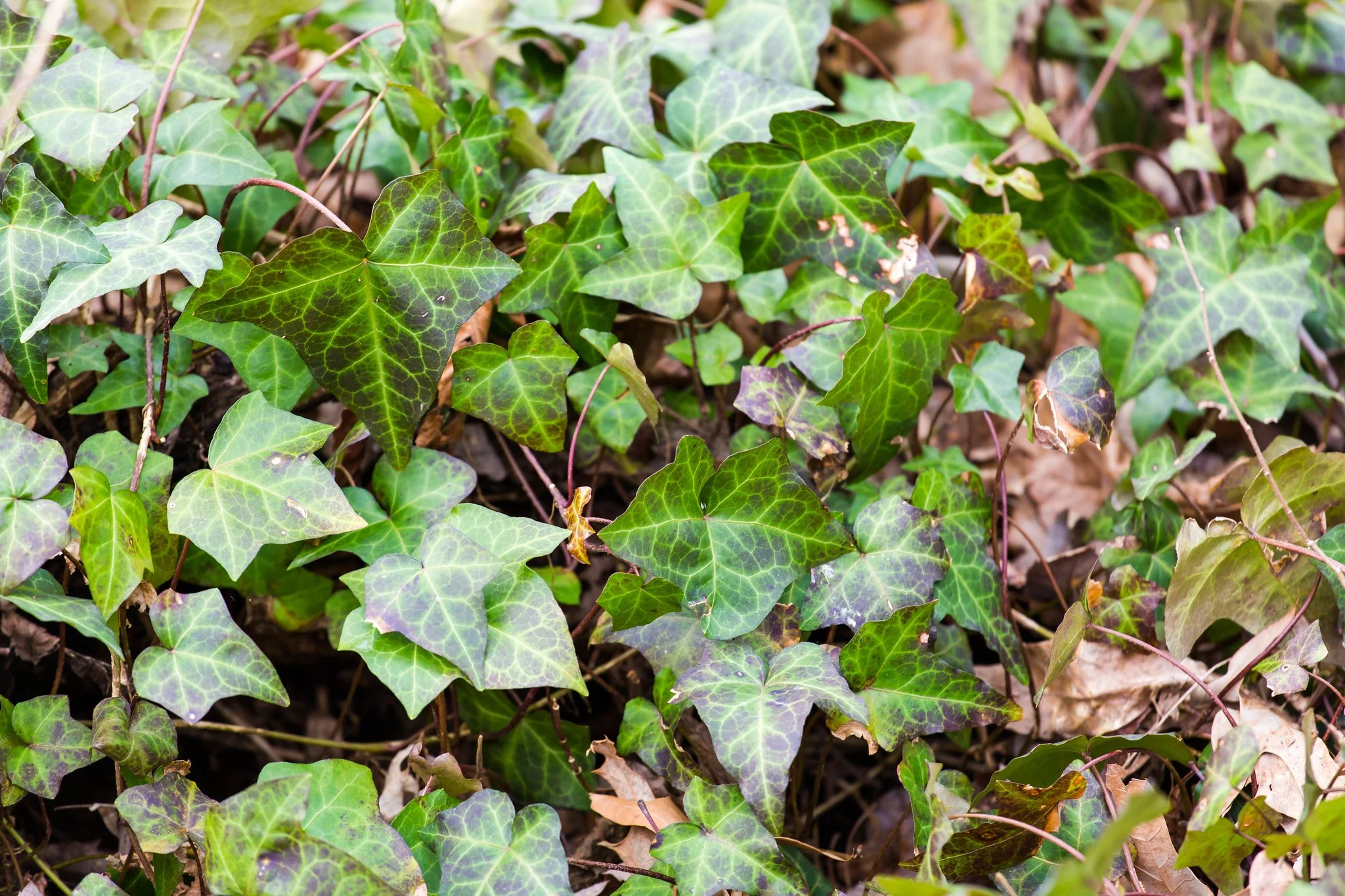‘Tis the season of spooky things, and invasive plants are giving us a fright!
Luckily, there are many native plant alternatives to our region’s scariest invasives. Read on to learn some spooky facts about common invasive plants—plus how to make your landscape less frightening by swapping in native species.
Burning Bush is an invasive plant in Ohio. Photo credit: Sue Thompson
Spooky Invasive #1: Burning Bush
Why It’s Spooky
Burning Bush routinely escapes cultivated landscapes and invades regional woodlands, where it proliferates rapidly. The shrub reproduces via seeds and spreads aggressively, making roots wherever any part of the plant contacts the ground. As a result, it quickly out-competes native understory trees, shrubs, and perennials. This significantly hampers biodiversity, reduces habitat for pollinators and other wildlife, and impairs ecosystem functions.
Arrowwood Viburnum is a native shrub that produces ample white flowers and bunches of blue berries.
Native Plant Alternatives
Many people use Burning Bush in their hedgerows or for pops of fall color in the landscape. There are several native plant alternatives that can offer similar benefits. Two of our favorites:
Arrowwood Viburnum is an easily growing shrub that produces fragrant white flowers and bundles of dark blue berries. It works wonderfully in hedges or as a focal point in a larger bed.
Chokeberry puts on a beautiful fall show and produces an edible berry that is enjoyed by humans and wildlife alike. It has a more compact growth habit than Arrowwood Viburnum, making it a sound choice for smaller spaces.
Bush Honeysuckle is an extra spooky invasive plant.
Spooky Invasive #2: Bush Honeysuckle
Why It’s Spooky
Much like Burning Bush, Bush Honeysuckle proliferates in woodland spaces, where it grows aggressively and quickly out-competes native understory plants. Bush Honeysuckle has been linked to various harms in our waterways, including reduced water quality and impaired habitat for aquatic wildlife. The tenacious shrub has also been linked to increased erosion and a heightened risk of landslides.
Pawpaws are a great addition to woodland landscapes of all sizes (Our Land Organics design & installation)
Native Plant Alternatives
Many people accept honeysuckle’s encroachment because it creates a privacy screen along woodland edges. But when you remove honeysuckle, a world of possibilities opens up both in terms of aesthetics and ecological benefit. Several native shrubs can offer privacy while supporting forest restoration:
Viburnums, particularly Arrowwood Viburnum, will create a dense hedge that offers a privacy screen as well as gorgeous fall color. They produce dark blue berries that are beloved by birds and serve as a host plant for a huge variety of moths and butterflies.
Staghorn Sumac is another deciduous shrub that helps create privacy while revitalizing forest ecosystems. It grows well in poor soils and on hillsides. It’s a great food source for birds and offers a striking pop of color in the winter landscape.
Bottlebrush Buckeye has uniquely shaped blooms that stand out in the landscape. Its wide growth habit creates a privacy screen. Like Arrowwood Viburnum and Staghorn Sumac, it’s an excellent food source for birds.
Pawpaw is a native understory tree that creates dense stands, which can fill out the understory layer of a woodland area and provide a three-season privacy screen. In late summer, pawpaws produce fruits that are enjoyed by humans and wildlife. In fall, the trees’ leaves turn to a beautiful yellow.
English ivy is an invasive plant that spreads rapidly and causes ecological and property damage. Photo credit: Melissa McMasters
Spooky Invasive #3: English Ivy
Why It’s Spooky
English Ivy is a common groundcover in conventional landscapes—and it’s also one of the most invasive plants around. It grows aggressively with gripping tendrils that will climb up, around, across, or through fences, buildings, trees, shrubs, power lines, and so on. This tendency explains why English Ivy contributes to massive amounts of property damage. It also frequently escapes cultivated landscapes and enters forest settings, where it climbs trees and blocks photosynthesis, strangling trees to death.
Carex pensylvanica creates a lush, calming backyard landscape (Our Land Organics design & installation)
Native Plant Alternatives
There are many native plants that will provide the benefits of a groundcover without the harms caused by English Ivy.
Carex pensylvanica is a low-growing sedge that is well suited to shady, wooded areas, where it establishes well under trees. For people looking to cover lots of ground, Carex pensylvanica can even be used as a lawn alternative. Many bird species use this sedge as nest material.
Native geraniums are a great groundcover choice for sunnier areas. They establish well and spread gradually to cover bare patches of soil. Their pleasant fragrance and blooms make them an ideal choice for border beds and walkways.
Fragaria virginiana is a quick-growing groundcover that performs well in both sunny and partly shaded sites. It’s unique among groundcovers in that it is a fruit-bearing plant. The nutritious strawberries are edible for both humans and wildlife.
Miscanthus sinensis or Chinese Silvergrass is an invasive species that causes ecological damage. Photo credit: F.D. Richards
Spooky Invasive #4: Miscanthus (Chinese Silvergrass)
Why It’s Spooky
A common ornamental grass in landscapes across the U.S., Miscanthus regularly escapes cultivated environments and invades roadsides, forest edges, and disturbed sites. It has a rhizomatic root structure that makes it very difficult to eliminate, because any rhizomes left behind will create new plants. Because of its tendency to out-compete native grasses, Miscanthus is now categorized as invasive in 25 states.
Big Bluestem is a large, upright oriental grass that adds a pleasing hue to a native landscape (Our Land Organics design & installation)
Native Plant Alternatives
Miscanthus is often planted for its tall height, which offers privacy, and its showy seed heads, which provide winter interest in the garden. Several native plants can provide these same benefits while supporting ecological wellbeing.
Panicum Switchgrass is a native ornamental grass that can be used as a singular specimen plant or planted in large stands to create stunning meadows and prairies. In the Cincinnati region, this grass can reach up to 6 feet tall. It roots deeply, which helps protect against erosion, and its leaves and seeds provide food and nest material for many bird species.
Big Bluestem is very similar to Panicum Switchgrass in terms of its benefits. It’s a native ornamental grass that can reach heights of up to 6 feet, and it creates a deep root system that helps hold soil in place. It provides important food and nest material for native birds. It also offers rich, beautiful color throughout much of the year.









